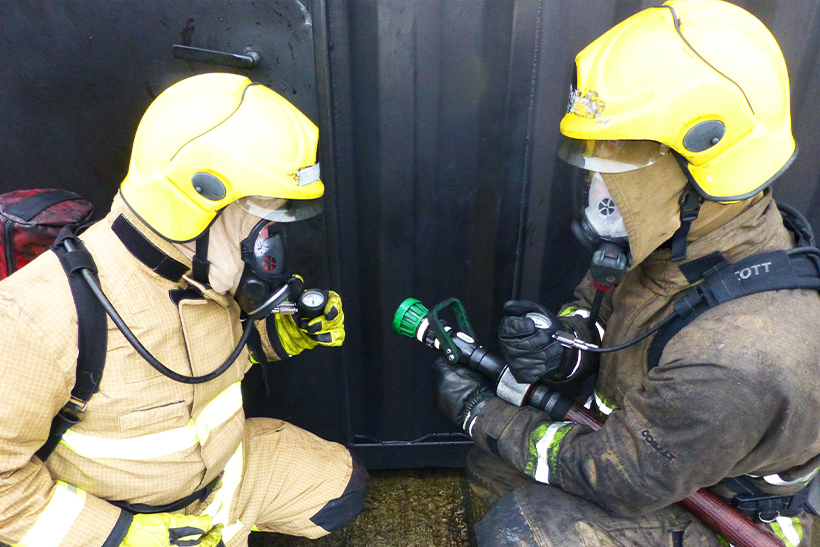Course
Offshore Emergency Response Team Member
Course aim
The aim and objectives of the OERTM Initial Training Programme are to equip the delegate with the necessary knowledge, understanding and skills to perform the role of Offshore Emergency Response Team Member effectively.
Learning outcomes
Define the role and explain the key responsibilities of the Emergency Response Team Member.
Explain the purpose of offshore emergency response arrangements
Explain the purpose of offshore emergency response procedures.
Identify hazards and risk mitigation associated with typical offshore fire and non-fire incidents.
Explain the purpose of fixed fire systems offshore.
Understand the performance capability and limitations of typical fixed systems offshore.
Identify the emergency response PPE requirements for the OERTM.
Under directions from the OERTL: approach the incident area in a controlled manner – continually assessing how the changes in the emergency could impact on the safety of other OER team members.
Communicate effectively with the OERTL and team members
Respond appropriately to OERTL direction in emergencies
Use safe working practices and site-specific procedures
Select and use portable fire fighting equipment.
Select, operate and flush foam firefighting equipment.
Extinguish a fire and secure an area.
Conduct breathing apparatus operations in accordance with OERTL directions and safe practices.
Conduct effective search and rescue for missing persons and casualties during the emergency
Demonstrate correct casualty handling and recovery techniques.
Pre-Attendance requirements
There are no formal prerequisites for the OERTM training programme.
Assessment
Delegates will be assessed against the knowledge learning outcomes by written, open-book test or series of tests and against the practical learning outcomes using direct observation and oral questions as appropriate.
Course
Helideck Emergency Response Team Member
Course Aim
The aim of the Helideck Emergency Response Team Member (HERTM) Training programme is to equip Offshore Helideck emergency response personnel with the knowledge, understanding and skills required to perform an emergency response team member role in offshore helideck and helicopter emergencies.
Learning Outcomes
The key role and key responsibilities of the HERTM.
The main elements of helideck emergency response plan.
Types of potential offshore helideck emergencies.
The general firefighting safety goals and objectives.
The purpose of typical helideck emergency systems and controls.
The main differences between helideck emergency response on a main fixed or floating installation and a normally unattended installation (NUI).
To successfully complete this training programme, delegates must be able to perform:
Emergency access and egress to and from helidecks including clear, concise and effective communications with HERTL and team members.
Updating HERTL on progress against the emergency response plan at appropriate times.
Responding appropriately to HERTL direction during emergencies including the correct selection of appropriate fire-fighting equipment for the incident.
Under direction from the HERTL: approaching the incident area in a controlled manner continually assessing how the changes in the emergency could impact on the safety of other ERT members, maintaining a means of escape from the incident area.
Effective execution of emergency response tasks.
Conducting helicopter incident firefighting operations, to include responding to a helicopter engine fire using a CO2 media extended applicator.
Correct donning and use of breathing apparatus (BA) when instructed by HERTL (all delegates to practice donning and using BA).
Effective Search and rescue (SAR) principles and techniques – on or close to the helideck, locating, extracting and handling missing personnel and casualties following a helicopter incident on the helideck.
Appropriate response to non-firefighting operations during helicopter incident.
Effective use of firefighting fixed, portable and mobile systems, including fixed fire
Monitors, dry chemical and Co2 fire extinguishment and control media
Responding to an NUI helideck fire (with limited firefighting equipment).
Working with back-up emergency response teams – where required to do so.
Correct casualty handling techniques.
Hose-running techniques and associated hazards
Assessment
Delegates will be assessed against the learning outcomes using direct observation and oral and/or written questions as appropriate.
Delegate Pre-requisites
A valid OPITO Helideck Operations Initial Training Certificate
